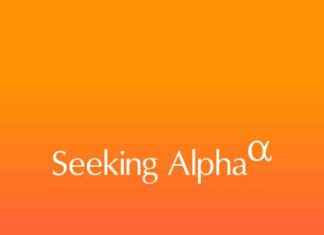One was cherry red and one was Pacific blue and then hubby Henry wore a black one.
Regular devotees of Madam Secretary could not have missed Tea Leoni’s occasional habit of sporting a Canada Goose parka, even when it looked as though her more-Gucci-than-Goose character might expire wrapped in all that down.
The Canadian maker of extreme winter wear isn’t new to the world of product placement and celebrity endorsement. Witness the collaborations with Drake and Milos Raonic and the serial sightings of a parka-wearing Emma Stone or Amy Schumer in urban environments more suited to latte hunters than Everest summiteers.
This has been the genius of the brand, remaking Sam Tick’s Metro Sportswear, the rain suit maker founded in 1957, into the manufacturer of the $1,150 Callaghan parka for him and the $1,200 Liberty parka for her.
With a preliminary prospectus for its initial public offering now filed, Canada Goose Holdings Inc. is betting on three things. One, that it can grow its U.S. presence via “white space” opportunities (the Mid-Atlantic, Midwest and Pacific Northwest) and its overseas potential via markets in Germany, Italy, Scandinavia and others (Canada Goose products are sold in 36 countries). Two, that the company with the “Arctic Program” disc logo will be accepted in the marketplace as a maker of wear for three seasons, not just one. And three, that it can successfully respond to what it says is consumer interest in brand extensions beyond outerwear. Travel gear, knitwear and bedding are mentioned.
No question the company has a good story to tell. In his letter to shareholders in the IPO, chief executive officer Dani Reiss takes a page from Google founders Larry Page and Sergey Brin in defining the DNA of the company. “We have turned business challenges into leadership opportunities and intuition into insight, invested heavily when others only chased margins and we have demonstrated that ‘doing good’ is good for business,” Reiss writes. “We are not interested in trading short-term revenue opportunities for bad long-term business decisions. We are focused on building an enduring brand, a legacy for our employees and our country and long-term value for our shareholders.”
(Brin and Page famously wrote their “Don’t be evil” mantra for the Google IPO. “We believe strongly that in the long term, we will be better served — as shareholders and in all other ways — by a company that does good things for the world even if we forgo some short-term gains.”)
The Canada Goose leadership believes that what’s good for the Goose is its laudable “Proudly Made in Canada” branding distinguishing it from such competitors as North Face, Arc’teryx and Patagonia. “While many companies in our industry outsource to offshore manufacturers,” the prospectus states, “we are committed to aggressively investing in producing premium, high-quality products in Canada, the country from which we draw our inspiration.” The company has applied for a listing on Toronto and New York stock exchanges using the trading symbol GOOS.
At the moment the company manufactures about a third of its product at facilities in Toronto, Winnipeg and Montreal. It has plans to end alliances with Canadian subcontractors by bringing additional manufacturing in house and boosting its current employee count of approximately 1,200.
(To fully meet its own test, it should additionally name and provide transparent inspection reports for its six international subcontractors, which manufacture “non-core” products for the company. As of April of this year the company promises that all fur used in its products will be fully traceable.)
The challenges that lie ahead are many, including competition from the upstart “artisanal” made-in-Canada Moose Knuckles parkas (their men’s crystal parka with a crystal logo is featured online at $3,500) and companies like Patagonia, which brands itself as the “activist company” and notably donated 100 per cent of its gross Black Friday sales last November, an approximate $10 million (U.S.), to environmental organizations.
As soon as it steps out of its Arctic season, the defining characteristics of Canada Goose — exceptional warmth — blur against the competition. Will women shoppers fall for the featherweight Rosewell jacket in Sedona pink at $395? The spring offering is designed to “face high winds and light rain” and is “water resistant.” Its brand distinctiveness is unclear. Will the Goose People — brand ambassadors — get onside with this?
The Canada Goose logo has been reduced to a wordmark on the hem of the jacket. That move could come as welcome news to shoppers who found the Arctic disc about 10 times too big. But unlike, say, Lululemon, with its more subtle logo imprinted in just the right places, the Goose logo on the Rosewell jacket disappears.
A historic opportunity has been missed here. The company could have introduced a line of watertight Sam Tick rainwear for spring, running defining black-and-white advertisements of old Sam at his sewing machine. Sam Tick, by the way, was Dani Reiss’s grandfather. It is a great story.
Reiss’s letter to shareholders reminds that the company knows risk. “We intend to continue on our path of swimming upstream,” he writes. That too is laudable. The consumer will decide if the goose in spring and fall has as much to offer as the goose in the brutal days of winter.
jenwells@thestar.ca
jenwells@thestar.ca
The Toronto Star and thestar.com, each property of Toronto Star Newspapers Limited, One Yonge Street, 4th Floor, Toronto, ON, M5E 1E6. You can unsubscribe at any time. Please contact us or see our privacy policy for more information.
Our editors found this article on this site using Google and regenerated it for our readers.







